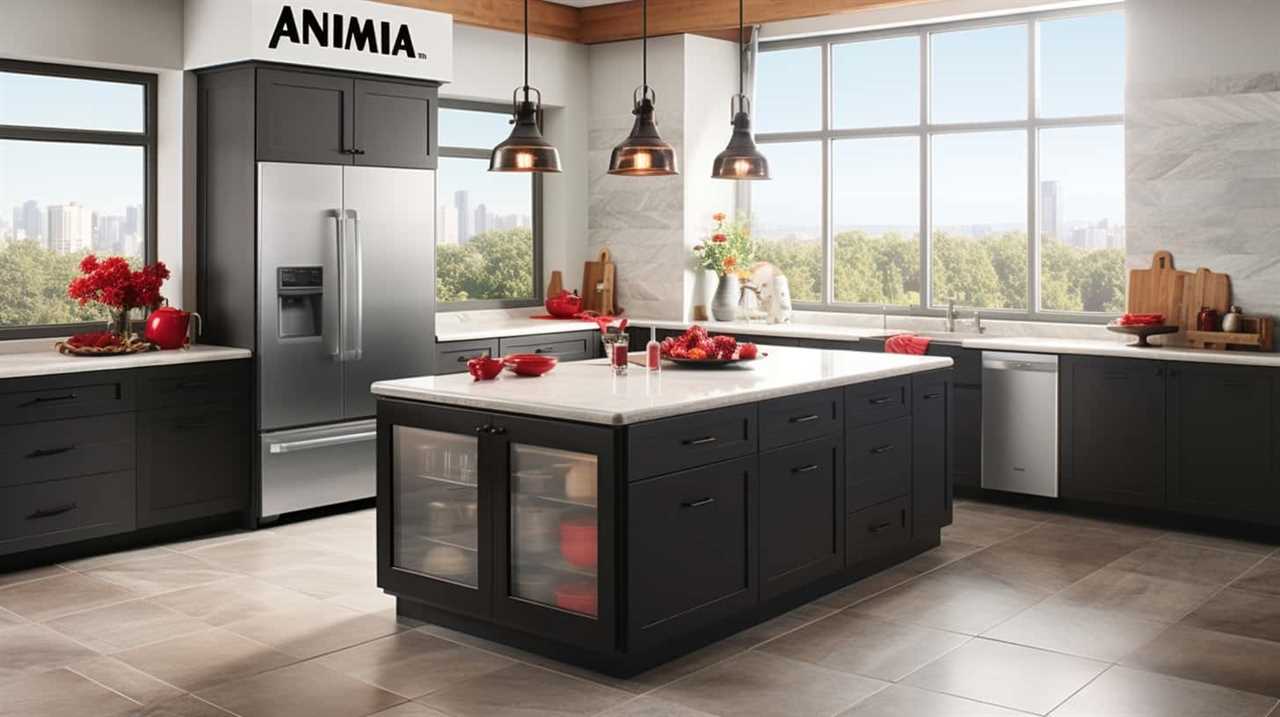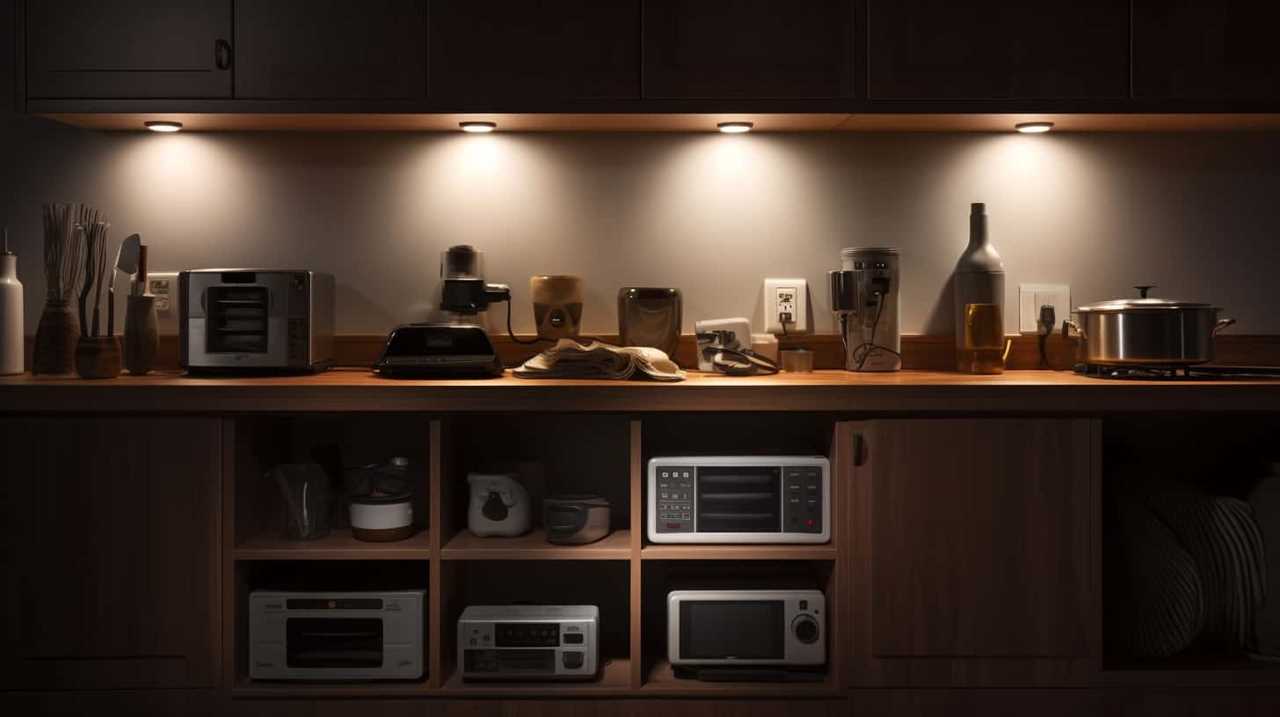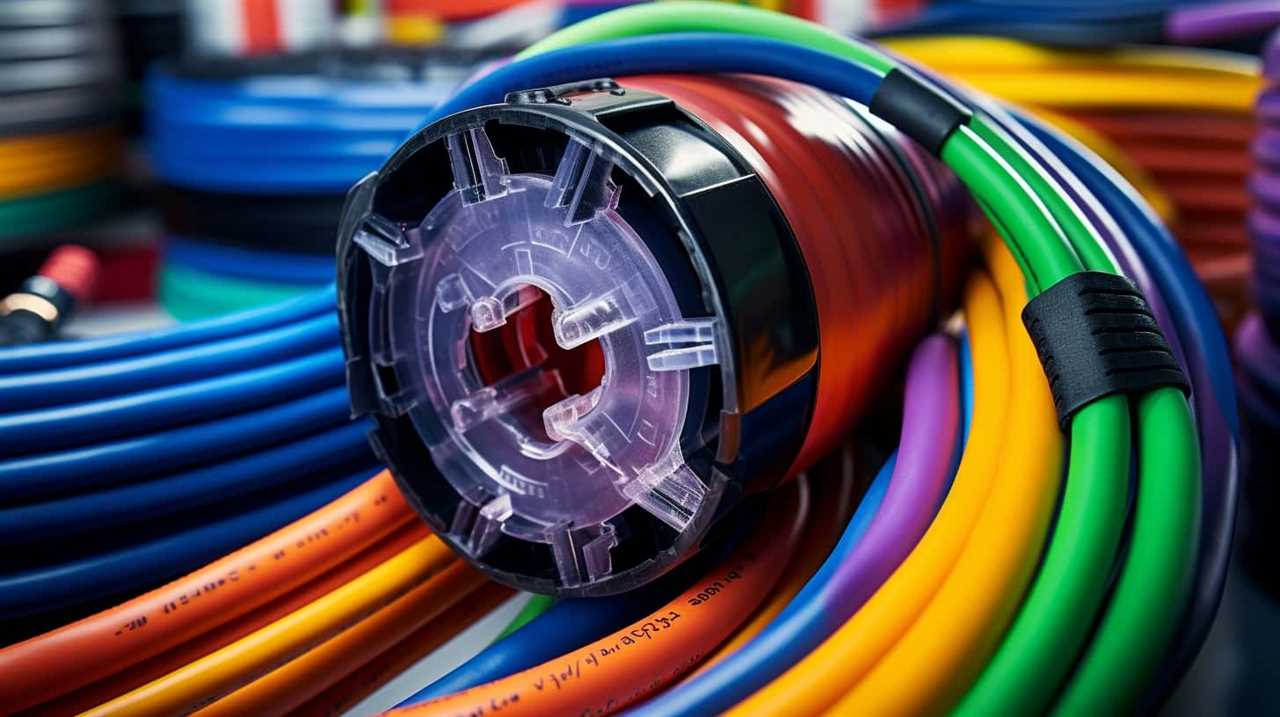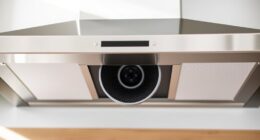We’ve all heard the old adage, ‘A bad craftsman blames his tools.’ Well, the same principle applies to appliances. They are crucial tools that enhance our lives, making them more convenient and enjoyable.
In this article, we’ll delve into the world of appliances, exploring their definition, importance, types, and, most importantly, examples.
So, if you’re ready to master the art of appliance knowledge, let’s dive right in!
Key Takeaways
- Appliances are devices designed for specific functions in a household and make tasks easier and more efficient.
- Faulty or improperly used appliances can lead to accidents, injuries, or fires, so safety is important.
- Appliances have evolved significantly due to advancements in technology and design, prioritizing safety and convenience.
- Examples of kitchen appliances include refrigerators, ovens, dishwashers, microwaves, and induction cooktops.
Definition of Appliance
An appliance is a device or machine designed to perform a specific function, typically in a household setting. Appliances have become an integral part of our daily lives, making tasks easier, more efficient, and saving us time and effort.

The importance of appliance safety can’t be overstated, as faulty or improperly used appliances can lead to accidents, injuries, or even fires. Over the years, appliances have evolved significantly, thanks to advancements in technology and design.
From basic manual appliances to sophisticated smart devices, appliances have become more energy-efficient, user-friendly, and feature-rich. With ongoing innovations and improvements, appliances continue to enhance our quality of life while prioritizing safety and convenience.
Importance of Appliances
Appliances play a crucial role in our daily lives, making tasks easier and more efficient. With the advancements in technology, appliances have become essential in modern homes. They’ve a significant impact on our daily life, allowing us to save time and energy.
Imagine having to wash dishes by hand or cook on a wood stove instead of using a dishwasher or a modern oven. Appliances like washing machines, refrigerators, microwaves, and vacuum cleaners have become indispensable in our households. They not only make our lives more convenient but also improve our overall quality of life.

Types of Appliances
We use a wide range of appliances in our daily lives to make tasks easier and more efficient. There are various types of appliances available, each serving a specific purpose. Two popular types of appliances are energy efficient appliances and smart home appliances.
Energy efficient appliances are designed to consume less energy while still providing the same level of performance. These appliances aren’t only beneficial for the environment but also help in reducing electricity bills. Examples of energy efficient appliances include refrigerators, washing machines, air conditioners, and LED light bulbs.
On the other hand, smart home appliances are connected to the internet and can be controlled remotely using a smartphone or voice commands. These appliances offer convenience and automation in our homes. Some examples of smart home appliances are smart thermostats, smart locks, smart lighting systems, and smart kitchen appliances.
Examples of Kitchen Appliances
Continuing from the previous subtopic on types of appliances, let’s explore some examples of kitchen appliances that can greatly assist in our daily cooking and meal preparation.

- Refrigerator: A staple in every kitchen, refrigerators help us store and preserve perishable food items for longer periods. Regular maintenance, such as cleaning the coils and checking the seals, is essential to ensure their optimal performance and longevity.
- Oven: Whether it’s baking, roasting, or broiling, ovens provide a versatile cooking method for a wide range of dishes. To maintain their efficiency, it’s important to clean the oven regularly and inspect the heating elements.
- Dishwasher: These appliances simplify the task of cleaning dishes, saving time and effort. Proper maintenance includes regularly cleaning the filter and checking for any clogs or leaks.
- Microwave: Ideal for quick heating and defrosting, microwaves are a convenient addition to any kitchen. Keeping the interior clean and ensuring the door seals properly are essential for efficient operation.
- Induction Cooktop: These energy-efficient appliances heat up quickly and provide precise temperature control. Regular cleaning and checking for any damage or loose connections are necessary for their safe and efficient use.
Examples of Household Appliances
Let’s explore some examples of household appliances that can greatly assist in our daily tasks and make our lives more convenient and efficient.
One example is energy efficient appliances, which are designed to consume less energy while still providing the same level of functionality. These appliances not only help us save on utility bills, but also contribute to reducing our carbon footprint.
Another example is smart home appliances, which are interconnected devices that can be controlled remotely through a smartphone or voice command. These appliances can automate tasks, such as adjusting the temperature, turning on/off lights, or even ordering groceries. With their advanced features and connectivity, smart home appliances offer convenience and efficiency like never before.
Investing in energy efficient and smart home appliances can transform our homes into modern, eco-friendly spaces that simplify our daily routines.

Examples of Commercial Appliances
Now let’s talk about some popular commercial appliance brands and the benefits they offer.
When it comes to commercial appliances, there are several trusted names in the market, such as Samsung, LG, and Whirlpool. These brands are known for their high-quality and durable appliances that are specifically designed to meet the demands of commercial settings.
Investing in commercial appliances can bring numerous benefits to businesses, including increased efficiency, improved productivity, and reduced operating costs.
Popular Commercial Appliance Brands
While researching popular commercial appliance brands, we discovered that several well-known companies dominate the market. These companies offer a wide range of energy efficient appliances and incorporate smart home appliance technology. Here are some examples of popular commercial appliance brands:

- Samsung: Known for its innovative technology and sleek designs, Samsung offers a variety of commercial appliances, including refrigerators, ovens, and dishwashers.
- Whirlpool: Whirlpool is a trusted brand that offers high-quality commercial appliances, such as washers, dryers, and ranges, known for their durability and performance.
- LG: LG is another leading brand in the commercial appliance market, offering a range of appliances like refrigerators, dishwashers, and microwaves, known for their energy efficiency and smart features.
- KitchenAid: KitchenAid is renowned for its premium kitchen appliances, including refrigerators, ovens, and dishwashers, known for their stylish designs and advanced features.
- GE: GE offers a wide range of commercial appliances, including refrigerators, ranges, and dishwashers, known for their reliability, energy efficiency, and smart home integration.
These brands have established themselves as leaders in the commercial appliance industry, providing consumers with energy efficient and technologically advanced options for their businesses.
Benefits of Commercial Appliances
As we delve into the benefits of commercial appliances, let’s continue exploring the advantages offered by popular commercial appliance brands.
The use of commercial appliances in businesses has a significant impact on their operations. One of the key advantages of using commercial appliances is their efficiency. These appliances are designed to handle heavy workloads and perform tasks quickly, saving businesses valuable time and increasing productivity.
Additionally, commercial appliances are built to withstand the demands of a commercial setting, ensuring durability and longevity. This means that businesses can rely on these appliances for continuous operation without frequent breakdowns or the need for costly repairs.

Furthermore, commercial appliances often come with advanced features and technologies that enhance performance and provide greater control over operations. These benefits contribute to improved efficiency, cost savings, and ultimately, the success of businesses in various industries.
Frequently Asked Questions
Are Appliances Only Used in Residential Settings, or Are They Also Used in Commercial and Industrial Environments?
Appliances in commercial spaces are not just limited to residential settings. They are also extensively used in industrial environments. The benefits of using appliances in industrial settings include increased productivity, efficiency, and automation of processes.
Can Appliances Be Categorized Based on Their Energy Efficiency Ratings?
Appliances can indeed be categorized based on their energy efficiency ratings. Energy saving appliances are like shining stars in the galaxy, helping us conserve energy and reduce our carbon footprint.
How Do Appliances Contribute to the Overall Functionality and Convenience of a Kitchen or Household?
Using advanced appliances in a modern kitchen greatly benefits us. They enhance functionality and convenience, making household chores easier and more efficient. These appliances have a significant impact on our daily lives.

Are There Any Safety Guidelines or Regulations That Need to Be Followed While Using Appliances?
Safety guidelines and maintenance tips are crucial when using appliances. It’s important to follow proper usage instructions, keep them clean, and regularly check for any signs of wear or damage.
What Are Some Common Maintenance and Troubleshooting Tips for Appliances?
When it comes to appliance troubleshooting tips and common maintenance techniques, we’ve got you covered. From checking for loose connections to cleaning filters regularly, we’ll help you keep your appliances running smoothly.
Conclusion
In conclusion, appliances play a crucial role in our daily lives, making our tasks easier and more efficient. From kitchen appliances like refrigerators and microwaves to household appliances like washing machines and vacuum cleaners, and even commercial appliances used in restaurants and hotels, these devices simplify our routines and save us valuable time.
For instance, imagine coming home after a long day at work to a perfectly cooked dinner prepared by a smart cooking appliance, allowing you to relax and enjoy a delicious meal without any effort.











